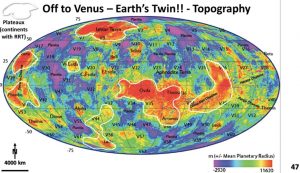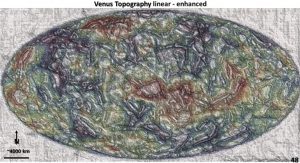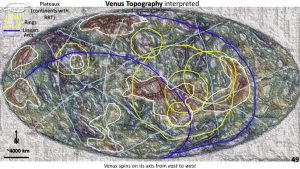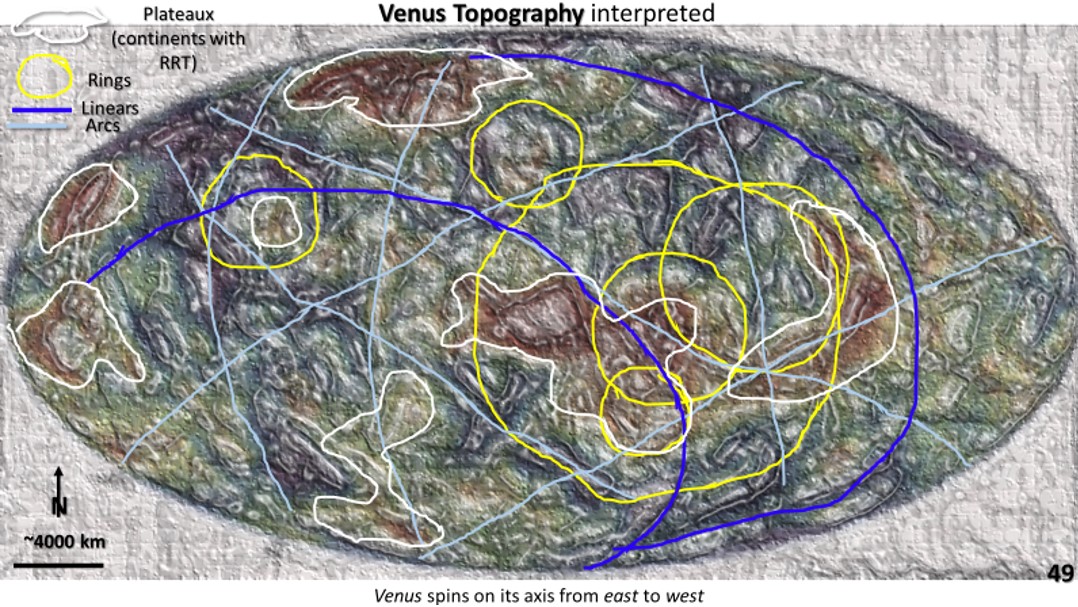
We will now look at Venus Earth’s twin (Hansen 2016).
The orange areas are the topographic equivalent of our continents and lie about 4 km above the blue areas which would be equivalent of our oceans. At this scale one can see a WNW trend running between the continents in the lower left side of the image.
Based on what I’ve seen on Earth I would think that there are one or two large ring structures forming the continents in the central-right of the image.

This enhanced image shows the rings and linears while maintaining the colours of the topography. There is a similarity to Earth’s structure at the global scale (see figures 41 to 46 in the previous post).

This enhanced image shows the rings and linears while maintaining the colours of the topography.
Venus rotates in the opposite direction to Earth, only rotates twice for every rotation around the sun and only has a 2 degree axial tilt. Venus also has no moon.These criteria are reflected in the structural geology observed on Venus.
The linear structures are roughly orthogonal, on Earth they are 25 degrees to the NW and 65 degrees to the SW reflecting Earth’s 23 degree axial tilt. Also Earth’s structures are more linear, stronger and much more active most likely reflecting the added tidal action of the moon on Earth.
The 5,000 km diameter large ring in the centre-right is what would have formed the continents in that location. As on Earth, this ring is surrounded by a more diffuse 10,000 km ring similar to those surrounding Africa and South America. This ring must have formed in the Late Heavy Bombardment (4.2 – 3.8 billion years ago) as there have not been any huge ‘Venus’ shattering impacts since that time, based on the evidence from our moon.
The linears are almost identical to those seen on Earth, even in their orientation. This suggests that Venus and Earth have had a much more similar evolution than is currently recognised. Venus is believed to have had only minor Plate Tectonic activity.
A couple of huge, elongate arcuate structures are shown in dark blue. On Earth very flat sub-surface structures are seen in seismic tomographic sections extending from the surface west of South America and hitting the core under Africa. Maybe these arcs are the surface expression of similar flat structures cutting the surface of the sphere of Venus.
Exploration on Venus. It is a bit premature but if I was to explore for minerals on Venus I would be looking at the intersections of the linears and rings – just as I have advocated on Earth.
Happy future hunting!!

